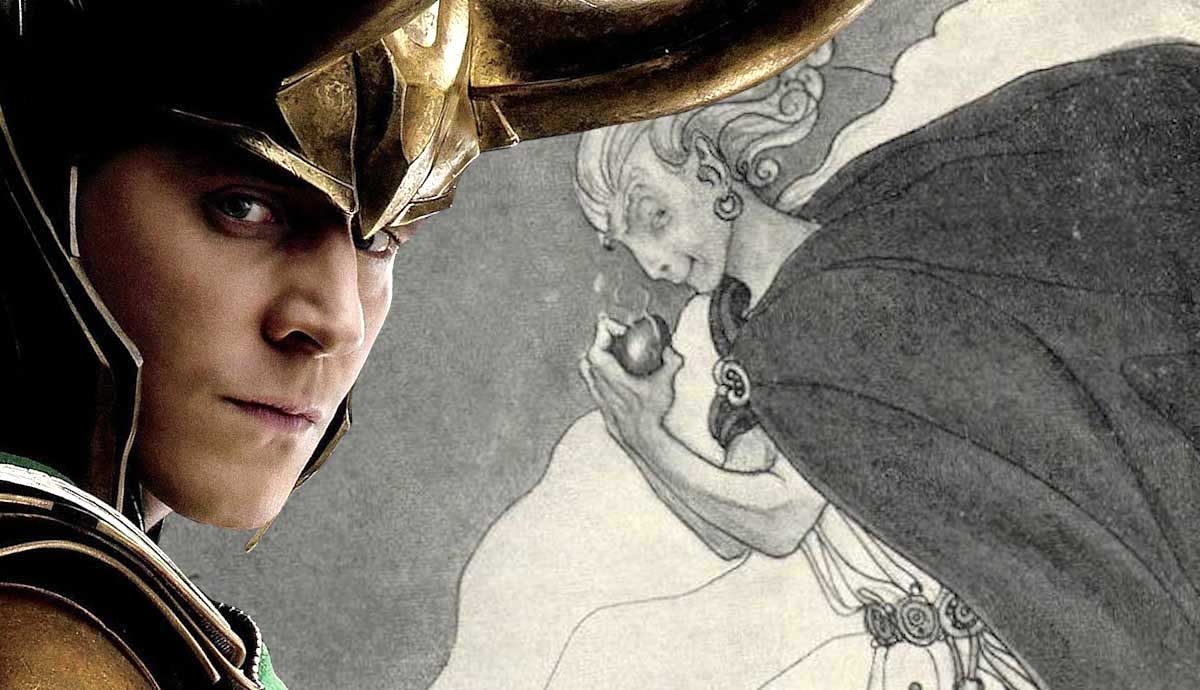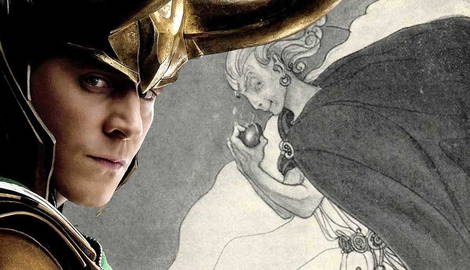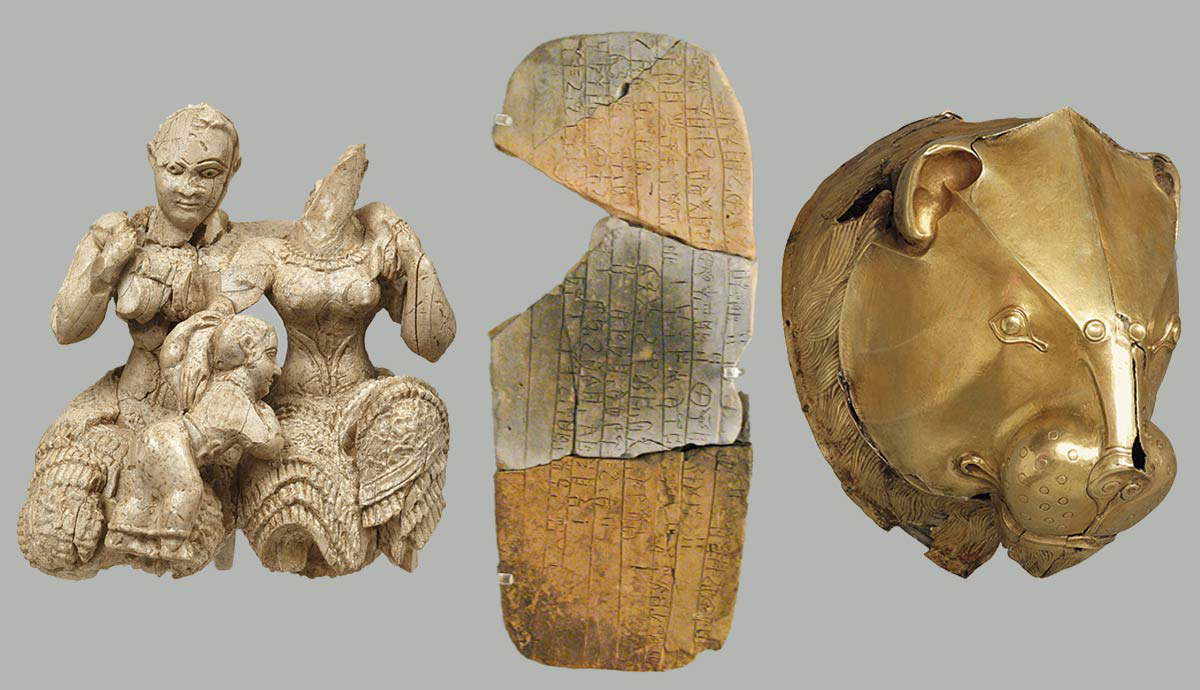
Loki, the god of mischief, is one of the most famous figures in Norse mythology, and the adaptions of Loki by Marvel have transformed him into a beloved character among fans. However, the “real” Loki was far from the charming, handsome, dark-haired character portrayed by Tom Hiddleston. Read on to learn twelve historical facts about the god.
12. Loki Could Shapeshift

Loki, the trickster god of Norse mythology, was known for his mischievous and unpredictable nature. He possessed an array of powers, making him a formidable opponent to the other gods. One of his most notable abilities was shapeshifting, which according to surviving historical documents, such as Snorri Sturluson’s Icelandic Edda and the Poetic Edda, allowed him to transform into various animals and people. This aided him in his trickery and deception tactics against his enemies and allies alike. One of his many forms was a bird, which he famously used to fly to the realm of the giants, Jötunheim.
In addition to shapeshifting, Loki possessed incredible intelligence, devised cunning schemes, was a master of illusion, and had a silver tongue, meaning he could persuade others to do his bidding.
11. Loki Could Control Fire

Fire is associated with destruction and chaos, so some scholars believe Loki was the Norse god of fire. This connection is further reinforced by the etymology of his alleged parents’ names, Farbauti and Laufey, which mean “fierce strike” and “leaves,” respectively. Together, they represent the creation of fire when lightning strikes leaves. Additionally, the old Norse word logi translates to “fire” or “flame,” and Loki is the Germanic root of “flame.” As the historical documents describe, Loki’s offspring with the giantess Angerboda — Hel, the goddess of death, Jörmungand, the serpent wrapped around the world, and Fenrir, the wolf — are also closely linked to fire and destruction as they are responsible for bringing about Ragnarok, the end of the world. Moreover, Loki was known for wielding an ancestral sword called Laeveteinn, imbued with the power to create fire.
10. Archaeological and Geological Links to Loki

Archaeological and geological evidence further support Loki’s existence in ancient Norse mythology. The figure of Loki can be seen on a Snaptun flat stone in Denmark, which dates back to 1000 CE. Additionally, a 10th-century cross at St. Stephen’s Church in Kirkby Stephen, Cumbria, England, and a mid-11th-century Gosforth Cross in Cumbria depict a bound figure with horns and a beard, believed to be Loki.
In 2008, five hydrothermal vents, known as black smokers, were discovered in the mid-Atlantic Ocean between Greenland and Norway. These vents were named “Loki’s Castle” due to their distinct shape resembling a dark fantasy palace.
9. Loki’s Mistletoe Connection

The death of the god Baldr is a well-known story in Norse mythology. According to the 18th-century manuscript SÁM 66, 75v, Baldr — the beloved son of Odin and Frigg — prophesized his death in a dream, prompting Frigg to make every creature and object swear an oath not to harm him. However, disguised as an old woman, Loki tricked Frigg into revealing that mistletoe had not taken the pledge, as it was considered too young. With this knowledge, Loki fashioned a spear from mistletoe and gave it to the blind god Höðr to throw at Baldr. The spear pierced Baldr’s body, killing him instantly. In some versions of the story, the gods attempt to resurrect Baldr and mistletoe vows never to hurt him again.
Mistletoe has a positive connotation in Norse mythology as it is believed to represent the goodness that mistletoe promised to the gods and Frigg’s act of motherly love. This is why mistletoe is hung overhead and associated with kissing as a symbol of love and affection.
8. Loki’s Complex Family Dynamics

Loki’s parentage is a source of confusion and debate in Norse folklore. While Marvel’s Loki is the adopted son of King Odin and the biological child of Laufrey — the king of the Frost Giants of Jötunheimr — this differs from the original mythology. In some stories, Laufrey is depicted as a female, making Loki’s father actually his mother. Other accounts suggest that Loki had two Frost Giant parents, with Laufrey as his father and Farbauti as his mother. Loki was also born tiny, unlike the rest of his race. He is believed to have been rejected by his parents before being taken in by Odin when the Asgardians attacked Jötunheimr.
7. Loki’s Complicated Love Life

According to historical accounts, such as the Poetic and Prose Eddas, Loki’s first wife or mate was the giantess Angrboda, with whom he had three children: Hel, Jormungandr, and Fenrir. These offspring were fated to bring about Ragnarok. Mentioned in the same Eddas is a second wife of Loki’s, the goddess Sigyn, who bore him two sons, Narfi and Vali.
Another curious “tryst” involved Loki transforming into a mare and seducing the stallion Svðlifari, who was helping a builder fortify a wall around Asguard. The copulation resulted in the birth of Sleipnir, an eight-legged horse that would become Odin’s mount.
The Poetic Edda also includes a poem called Lokasenna, in which Loki is depicted as a milkmaid who allegedly gives birth to several children. Additionally, there is a reference to an alleged affair he had with the goddess Sif, Thor’s wife. Loki is further detailed as cutting off Sif’s beautiful golden hair in jest but later compensates by having two dwarves craft new magical hair for her from the blackness of the night.
6. Loki is Pansexual

According to the surviving historical documents, Loki is arguably portrayed as pansexual by acknowledging his attraction to individuals of any gender or species. This aspect of his character is evident in Norse mythology, where he is depicted as having relationships with Sif, Sigyn, Agryboda, and Svðlifari — and potentially many men as a milkmaid. Also worthy of note is the folklore story where Thor and Loki dress up as women to retrieve Thor’s hammer Mjolnir from the Jötun king, Thrym. Although the story’s text refers to Thor in his male pronouns, Loki is written with female pronouns, again alluding to a gender discrepancy.
In a more contemporary context, this gender ambiguity has been emphasized by Marvel. In the comics, Loki admits to being pansexual during his time as a Young Avenger and expresses attraction to both genders in Loki: Agents of Asgard. In the TV series Loki, he tells Sylvie that he has been with men — chiefly a prince — and women. Actor Tom Hiddleston, who played Loki in the Marvel films and TV series, stated that he hoped “Loki coming out as bisexual was meaningful to people,” calling it an important “small step” with “further to go.” Co-star Sophia Di Martino, who plays Sylvie, also emphasized the intention of Loki director Kate Herron to explore Loki’s sexuality on the show, drawing from the comic books and Norse mythology.
5. Loki’s Harsh Punishment

In Norse mythology, Loki suffers the most brutal of punishments. Due to his many crimes — especially his role in the death of Baldr — the gods eventually catch him and punish the trickster two-fold. First, Vali, another of Odin’s sons, transforms into a wolf and kills Loki’s son, Narfi. Then, using the entrails of Narfi, they bind Loki to a rock while a snake drips venom on him. However, being a devoted wife, Sigyn comes to her husband’s aid and places a bowl beneath the snake, capturing the poisonous drops before they fall on Loki. However, each time the bowl is full, she has to empty it, leaving Loki to endure some venomous splashes. This torture was meant to last until Ragnarok. A more positive detail is that Loki’s remaining son, Vali, survived the wrath of the gods.
4. Loki Wielded Thor’s Hammer

The common notion is that only Thor is worthy of holding the mighty hammer, Mjolnir; however, Norse mythology tells a slightly different story. According to the legends, Mjolnir was crafted by the same dwarves who made black tresses for Sif. Loki made a bet with them that they could not create better treasures than the ones owned by the gods. Thus, the dwarves got to work and crafted many magnificent items, including Mjolnir. However, because Loki had lost the bet, the dwarves refused to give over the items, including the hammer, so Loki stole it and presented it to the gods, ultimately earning Thor’s forgiveness — or rather, Thor spared his life — for cutting off Sif’s hair. Despite Loki never using the hammer for its power, technically, he still carried it — something that only Thor is meant to be capable of doing.
On a fun note, in the Marvel comic novel Avengers & X-Men: Axis, a radical twist occurs when a spell cast by Doctor Doom and Scarlet Witch makes Loki the “hero” and Thor the “villain.” This leads to a defining moment where Loki proves himself worthy and wields Mjolnir, using it to deliver a near-fatal blow to Thor.
3. Red-Haired Loki

Despite Tom Hiddleston’s captivating performance as dark-haired Loki in the Marvel Cinematic Universe, Norse mythology depicts Loki with red hair, a symbol of fire and chaos. Perhaps this links to the fact that as Loki was considered a Norse god, his genetics should reflect early Norse tribes, which genetically had red hair rather than blond hair and blue eyes. Later, in the 19th century, Loki was portrayed as a dark-haired Semitic fifth columnist within the Nordic Aesir, reflecting his cunning and mysterious nature.
Interestingly, the first comic version of Loki, published in 1949, featured Loki with a red crew cut and a pink outfit with shoulder pads. Yet, the comic did not draw from the character’s Norse mythology, and it was only when writers Stan Lee and Jack Kirby later revamped the character for Marvel that the iconic trickster we know today emerged.
2. Loki was a Mass Murderer

In Norse mythology, Loki was responsible for several violent acts, including killing several gods and mortals. One of his most infamous killings was that of Baldr, the god of light and purity. As previously mentioned, Loki tricked Baldr’s blind brother, Höðr, into shooting an arrow made of mistletoe, killing Baldr instantly, and Loki was ultimately punished for his role in the god’s death. In addition to killing Baldr, Loki killed Þjazi — a giant who had stolen the goddess Idun and her magical apples — by turning himself into a bird and luring Þjazi into a trap. He also killed a man named Fáfnir, who had turned himself into a dragon to protect his hoard of gold. Loki tricked Fáfnir into revealing his weak spot, allowing a hero called Sigurd to slay the dragon and claim the treasure.
On a contemporary stage, Loki’s reign of mass murder continued into Marvel’s adaptions of him, ranging from his attempt to conquer Earth in The Avengers to killing S.H.I.E.L.D. Agent Coulson to destroying Asgard in Thor: Ragnarok and murdering TVA agents in Loki.
Looking at the character from a historical and modern-day perceptive, it is evident that, despite his charismatic and likable personality, his behavior reflects larger societal issues, such as power struggles and the consequences of unchecked ambition.
1. Loki was not Worshiped

Unlike the other famous gods of Norse mythology, such as Odin, Thor, and Freyja, who had dedicated cults and temples, Loki received no such reverence as a deity in pre-Christian Scandinavia. This may not be so surprising, given that he was a notorious trickster and troublemaker. That said, some academics speculate that he may have been worshiped in ritual contexts involving the winter solstice, as his connection with fire and chaos may have been used to ward off evil spirits.
However, when comparing Norse Loki to Marvel Loki, the tide has turned. Tom Hiddleston’s Loki has garnered a massive fan base across the globe. One of the primary reasons for this is Hiddleston’s ability to bring a complex and multi-dimensional character to life on the screen. He perfectly captures Loki’s charisma, mischievousness, and vulnerability, creating a Shakespearian-like performance that audiences cannot get enough of. The actor’s masterful acting abilities have also made Loki relatable and sympathetic, changing his status from villain to anti-hero. His portrayal of the character is so convincing that viewers find themselves rooting for the trickster god.









